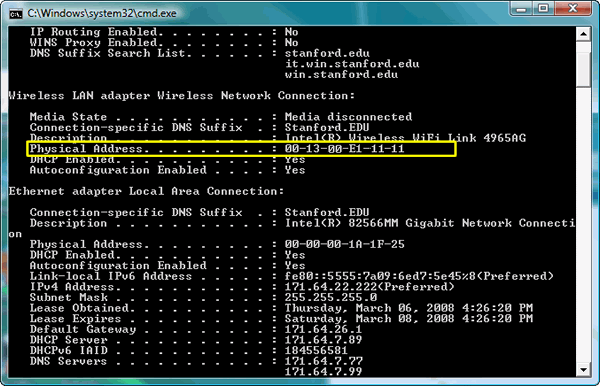
A corresponding service is available, for example, on. The assignment of OUIs is usually public and can be determined via databases. Bit 3–24 (manufacturer identification): Bits 3 to 24 encode an identifier (organizationally unique identifier, OUI), which is assigned exclusively to hardware manufacturers by IEEE.Addresses that are only locally unique are called locally administered address (LAA) and are marked with U/L = 1. If U/L = 0, the address is valid worldwide as a universally administered address (UAA). Bit 2 (registry): The second bit of the MAC address indicates whether it is an address with global validity (universal) or whether the address has been assigned locally (local).Multicast addresses are identified by I/G = 1 and are addressed to several receivers. If I/G = 0, it is a unicast address for a single network adapter. This bit is called I/G (short for individual/group). Bit 1 (receiver): The first bit of the MAC address specifies whether it is an individual or group address.You should now be able to paste the text elsewhere using the standard clipboard "paste" function.The bit sequence of each MAC address is divided into 4 areas, each of which encodes different information.


The MAC address and IP address are listed under the appropriate adapter as Physical Address and IPv4 Address.Type ipconfig /all at the command prompt to check the network card settings. Note: You do not need to click on anything on the Start screen - typing will automatically initiate a program search. Type cmd and press Enter to launch the command prompt. Press the Windows Start key to open the Start screen. How to find the IP number and MAC address of a network card This document explains how to find the IP number and MAC address of a network card in Windows 8 and 10.


 0 kommentar(er)
0 kommentar(er)
